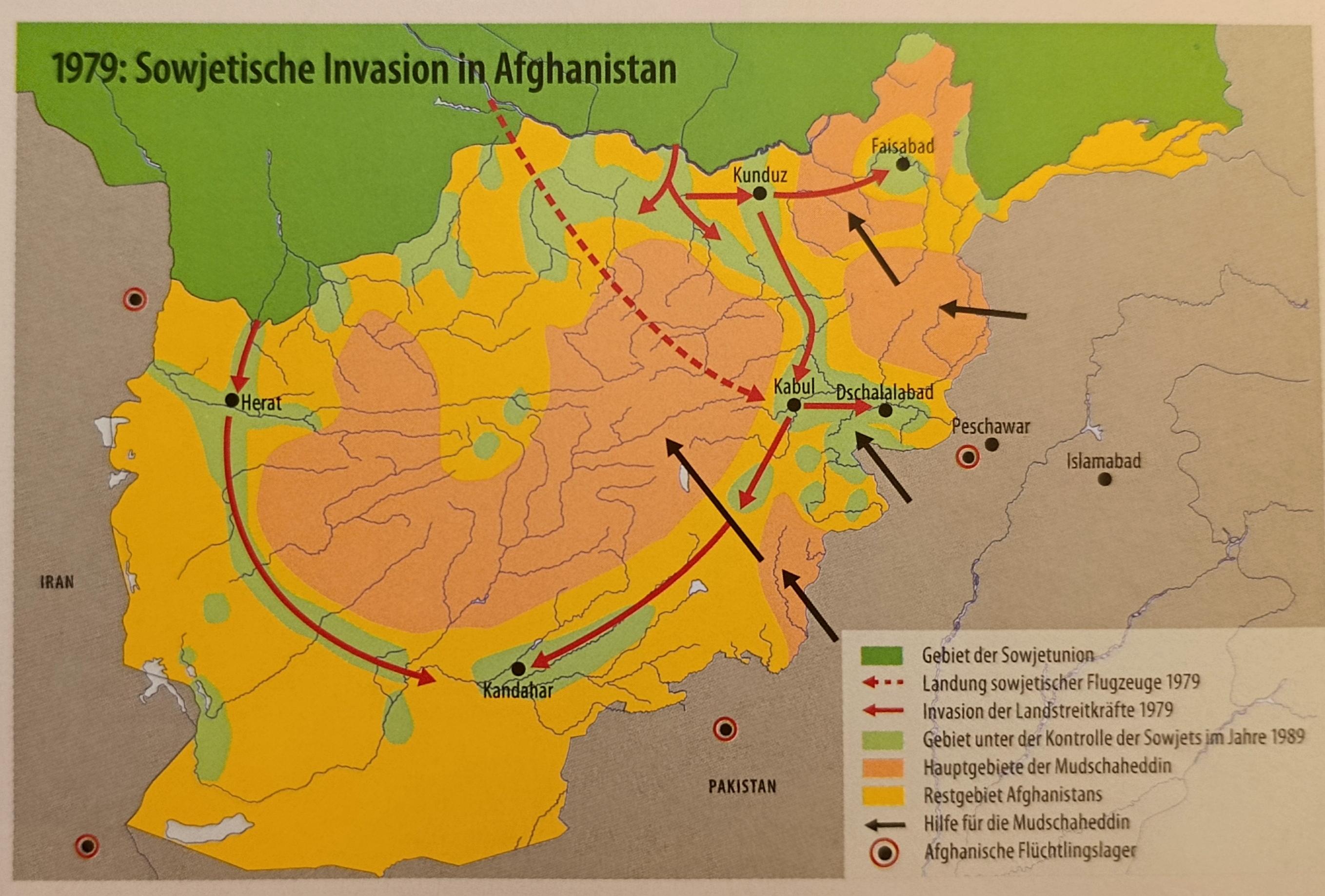Map of the Soviet Invasion of Afghanistan


Alex Cartwright
Senior Cartographer & GIS Specialist
Alex Cartwright is a renowned cartographer and geographic information systems specialist with over 15 years of experience in spatial analysis and data...
Geographic Analysis
What This Map Shows
This map illustrates the Soviet invasion of Afghanistan, which began on December 24, 1979, and lasted until February 15, 1989. The visualization highlights key military movements, the locations of major battles, and the territorial changes that occurred during this decade-long conflict. It provides a comprehensive view of the geographical landscape that shaped the invasion, including major cities, mountain ranges, and border crossings that were crucial to the Soviet strategy.
Deep Dive into the Soviet Invasion of Afghanistan
The Soviet invasion of Afghanistan is a significant historical event, not only because of its immediate geopolitical implications but also due to its lasting legacy that continues to influence global politics today. The invasion was primarily motivated by the desire to maintain a communist regime in Afghanistan, which was threatened by various insurgent groups collectively known as the Mujahideen. These groups were not only fighting for national sovereignty but were also backed by the United States and other nations, which saw the invasion as a direct challenge to their interests in the region.
Interestingly, Afghanistan's rugged terrain played a critical role in this conflict. The country is predominantly mountainous, with the Hindu Kush mountain range running through its center. This geography provided the Mujahideen with strategic advantages, as they used the mountains to launch guerrilla attacks against Soviet forces. The Soviets, despite their superior technology and heavy artillery, often found themselves at a disadvantage in this challenging landscape.
Throughout the war, the Soviets faced significant resistance, suffering heavy casualties. Estimates suggest that the Soviet military lost over 14,000 soldiers, while Afghan civilian casualties were catastrophic, with estimates ranging from one to two million. The map serves as a reminder of these human costs and the profound impact the conflict had on Afghan society, which was left devastated by years of warfare.
Moreover, the Soviet Union's military tactics included the use of airstrikes and ground offensives, which are marked clearly on the map. Key battles such as the Siege of Khost and the Battle of Panjshir Valley were pivotal moments that demonstrated the intensity of the fighting and the determination of the Afghan fighters.
Regional Analysis
The map allows us to examine various regions of Afghanistan and their significance during the invasion. For instance, the southern regions, like Kandahar, were vital for the Soviets as they connected to Pakistan, a key logistical base for the Mujahideen. In contrast, the northern regions, particularly around Kabul, were more accessible to Soviet forces but also became hotspots for intense urban warfare. The capital city, Kabul, saw a drastic transformation during the war, with infrastructure crumbling and a massive influx of refugees fleeing the violence in the countryside.
Interestingly, the different approaches taken by the Mujahideen in various regions were influenced by local customs and the socio-political landscape. For example, in the eastern provinces like Paktia and Paktika, tribal affiliations played a crucial role in organizing resistance against Soviet forces. The map provides a visual context for understanding these regional dynamics and how they shaped the overall conflict.
Significance and Impact
The significance of the Soviet invasion of Afghanistan extends beyond its immediate consequences. This conflict marked the beginning of a prolonged period of instability in Afghanistan, which has continued to affect the region for decades. The withdrawal of Soviet troops in 1989 did not bring peace; instead, it precipitated a civil war that eventually led to the rise of the Taliban and ongoing conflict in the area.
Moreover, the invasion had far-reaching implications for international relations. It intensified the Cold War tensions between the United States and the Soviet Union, leading to increased American military support for the Mujahideen. This conflict is often cited as a precursor to the rise of radical Islamist movements, as the war radicalized many Afghan fighters who would later play significant roles in various extremist groups.
In conclusion, the map of the Soviet invasion of Afghanistan encapsulates a critical moment in history that continues to influence geopolitical landscapes today. The lessons learned from this conflict remain relevant, as they highlight the complexities of intervention in foreign nations and the unpredictable consequences that can arise from military engagements. Ever wondered how history shapes our present? The Soviet invasion serves as a poignant reminder of the intricate web of events that define our world today.
Visualization Details
- Published
- October 7, 2025
- Views
- 44
Comments
Loading comments...